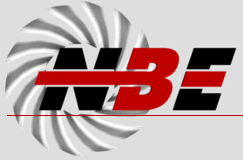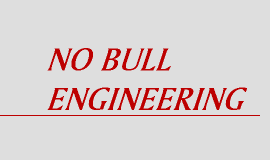TORSIONAL VIBRATION OF MARINE
PROPULSION SYSTEMS
This is a description of a short course that our president and chief engineer, Mark A. Corbo, P.E., teaches at the client’s site. Depending on the amount of audience interaction that takes place, the short course lasts for about 6 to 7 hours. The short course is split into two halves of approximately equal length. The first half consists of a general primer on the fundamentals of torsional vibration and a generic design procedure that can be used for all rotating equipment. The second half focuses exclusively on marine propulsion systems and the specific manner in which they should be handled from a torsional analysis standpoint.
An approximate agenda for the short course is as follows:
- Introduction
- Torsional Vibration Fundamentals
- General Description of Free and Forced Torsional Vibration
- Preparation of Lumped Parameter Models
- Undamped Torsional Vibration Analysis
- Coupling Modes vs. Shaft Modes
- Methods for Checking Computer Results by Hand
- Generation of Campbell Diagrams
- Torsional Vibration Excitation Sources
- Synchronous Motor Startups
- Types of Variable Frequency Drives
- Torsional Problems Associated With Variable Frequency Drives
- Determination of Interference Points
- Elimination of Interference Points by Inspection
- Representative Excitation Torque Magnitudes
- Common Damping Sources
- Determination of Damping Coefficients
- Steady-State Damped Response Analysis
- Transient Torsional Vibration Analysis
- Short Circuit Analysis
- Determination of System Adequacy
- Shaft Endurance Limit Determination
- Detailed HCF and LCF Fatigue Life Analysis Procedures
- Methods for Eliminating Problems
- Elastomer-in-Compression Couplings
- Hydraulic Couplings
- Overall Analysis Procedure
- Case Studies
- Torsional Vibration of Marine Propulsion Systems
- Typical Marine Propulsion Systems
- Need to Assess Multiple Operating Modes
- Modeling of Diesel Engine Crankshafts, Connecting Rods, and Reciprocating Parts
- Added Mass Effects in Propellers
- Typical Mode Shapes in Marine Propulsion Systems
- Diesel Engine (Gas Pressure & Inertia) Excitations
- Diesel Engine Fourier Coefficients
- Diesel Engine Major & Minor Orders
- Diesel Engine Damping
- Propeller Excitations & Damping
- Handling of Variable Pitch Propellers
- Forced, Damped Response Analysis Plots
- Determination of FC and FT Stress Limits for Intermediate & Propeller Shafting
- Barred Speed Ranges
- Effect of Changing Diesel Engine Loading Conditions
- Diesel Engine Misfire Condition
- Reciprocating Equipment Criteria for Acceptability
- Methods for Eliminating Problems
- Viscous Dampers
- Overall Analysis Procedure
- Coupling Between Torsional & Longitudinal Vibrations
- Case Studies
- Conclusion
Some of the benefits a client’s personnel receive from taking this short course include the following:
1. A greater familiarity with torsional vibration fundamentals, which would allow them to communicate more effectively with experts in the field.
2. A better understanding of the meaning and validity of torsional vibration results obtained from consultants and/or in-house computer codes.
3. An appreciation that, contrary to the approach of most engine manufacturers, torsional analysis is not a trivial task that can be handed to any junior engineer with a computer code.
4. A better understanding of the torsional vibration causes of common problems in marine propulsion systems which would assist them when trying to troubleshoot field problems.
5. A better feel for which components in a marine system play an important role in torsional vibration behavior and which ones have little impact. This would be valuable when evaluating potential design changes.
6. An appreciation that torsional vibration analysis can be performed in a practical and timely manner and does not require a "research project."
7. An appreciation for the large role that torsional vibration behavior plays in the reliability of marine propulsion systems and for the importance of evaluating that behavior in the design stage.
The short course is presented using multi-color Power Point presentation software. Each employee the client sends to the short course receives a complimentary copy of our paper, "Practical Design Against Torsional Vibration," and a pdf file containing all the slides presented in the short course.
BACK
| Home | Why Hire Us? | Services | Principals & Staff | Clients |
| Technical Papers | Short Courses | News Items | Contact Us |



